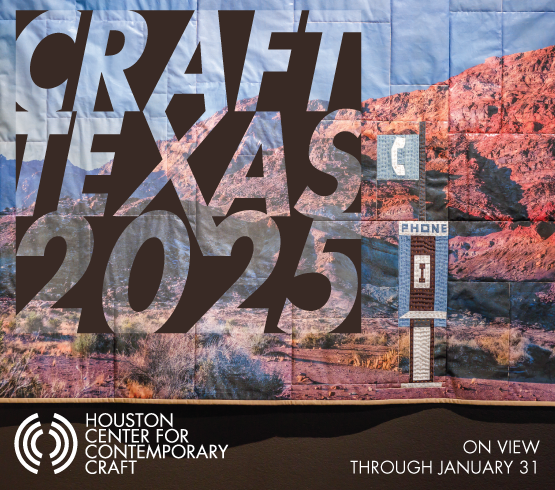When you think of geography, you may think of maps: maps showing state capitals, maps showing rivers, forests, deserts, and lakes, or maybe maps showing the migration patterns of your favorite species of bird. Alternatively, it may call to mind strict borders—invisible or not so invisible lines determined by political institutions. Both inform the world we live in, how we relate to the space we occupy, and our experiences in one area vs another.
This spring, it is the focus of the FotoFest Biennial, simply titled Critical Geography and curated by Steven Evans, Executive Director of FotoFest. Critical Geography will be on view from March 9 to April 21, 2024, in Houston at Sawyer Yards and venues city-wide.
In deciding the overarching theme of the biennial, Evans reflected upon the prior exhibition from 2022 – If I Had a Hammer. The biennial focused that year on how artists impact and are impacted by politics. This year, FotoFest builds from that foundation to highlight artists engaging with the social, economic, and political factors that impact our relationship with space, place, and our sense of community.
“Critical Geography developed for three reasons,” Evans explained. First is the zeitgeist; these issues are front and center in conversations on personal and public platforms. Secondly, it builds on the conversation of the 2022 biennial by speaking to a larger call for decolonization. Finally, there’s work connecting to this theme all over the world.
The biennial will feature works from over 20 artists, including newly commissioned projects and site-specific installations by artists Mark Menjívar, C. Rose Smith, Binh Danh, Sao Sreymao and Zarina Muhammad, Ethel Lilienfeld, and Mónica Alcázar-Duarte.
For this iteration of the biennial, Evans also plans to more closely weave in the other branches of FotoFest, such as their Literacy Through Photography program.
Mark Menjívar, for instance, had a project in San Antonio working with high school students. The results of this collaboration overlaid statements from the students on photos.
“We brought Mark in as an artist in residence and commissioned him to develop new work,” said Evans. “He used the San Antonio project as a jumping off point to work with the legacy of Freedom Schools, collaborating with students from Jack Yates High School in a project called Looking Up.”

1 ⁄6
Mark Menjívar
Under One Sky, (2021)
Installa.on view at the Doseum, San Antonio, TX. Courtesy of the ar.st.

2 ⁄6
Ethel Lilienfeld
INVISIBLE FILTER, 2022. Four-channel video and multichannel sound installation. Production Le Fresnoy - Studio national des arts contemporains. Installation view at Le Fresnoy - Studio national des arts contemporains, 2022. Courtesy of the artist and Le Fresnoy - Studio national des arts contemporains. © Ethel Lilienfeld.

3⁄ 6
Shona Illingworth
Topologies of Air (2021). Installation view
Three-channel high definition video and multi-channel sound installation, 45 min. Courtesy the artist. Commissioned by The Wapping Project.

4 ⁄6
Brad Temkin
No Name Sag Pipe Crossing Aqueduct 1 – Pearsonville, CA, (2021) From the series Aqueduct, 2021 – Ongoing
Courtesy of the ar.st.
Part of the First Los Angeles Aqueduct called “No Name Sag Pipe” – Diameter - 9’- 3” Riveted Steel Pipe with ¼”thick at the top of the sag and 9/16” thick at the bottom of the sag; length – 2,016 feet; operating pressure at the bottom of the sag is 158 psi.

5 ⁄6
C. Rose Smith
Un+tled no.19 – Savannah Co7on Exchange 1, (2022)
From the series Scenes of Self: Redressing Patriarchy, 2022 – Ongoing

6 ⁄6
Caleb Fung
King George V Memorial Park, Hong Kong, (2022)
Archival pigment print on metallic paper. Courtesy of the artist.
Mónica Alcázar-Duarte, on the other hand, will repurpose films produced with the support of The National Geographic Society. U K’ux Kaj / Heart of sky Mayan god of storms (2023–24) and Nepantla (2023–24) look at how the colonization of South America can be seen in the impending colonization of Mars, presented as an immersive experience in Critical Geography.
“When you’re putting together a project like this, finding balance and being inclusive is important,” Evans said. “There were topics that felt very important to cover: how communities make space, how do the ways a government changes geography affect people, how do these elements affect things we don’t consider, like air.”
“A big part of artists’ role is to reflect what is going on in society today,” says Evans. “These are some of the most important things happening right now, and we want to consider how artists look at things happening right this minute and how they might look back at it in a hundred years.”
—MICHAEL McFADDEN





